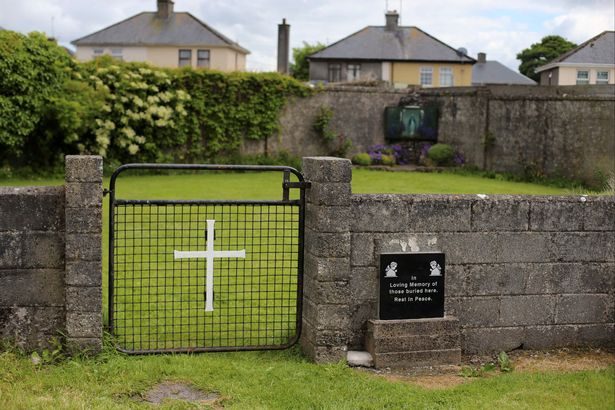In the search for a cheap headline, truth is the first casualty – that’s why good journalism matters, writes Michael Kelly
The well-known Dominican preacher Fr Timothy Radcliffe OP wrote recently about his increasing disenchantment with the mainstream press. “The media is relentless in attacking the Church,” he writes. “Every day there is verbal abuse, distortion, innuendo. I used to love reading the papers, but now I dread turning the page because of what I might see: more contempt heaped upon the Church which I go on loving, despite everything.
“And herein lies a problem,” he continues. “Everyone knows that the media is often untruthful, that it twists, wrongly accuses, denigrates. So why is it that we go on letting media dictate how we see the world?”
Why, indeed?
When I was a child, a priest who visited our school often expressed his view that a lie can get around the world before the truth has put its boots on. I’ve always remembered it and it has endowed me with a healthy scepticism about what I read in newspapers.
This is particularly true of matters of faith in the mainstream media and issues relating to the Catholic Church in particular. God knows the history of the Church hasn’t been all glorious, but it hasn’t been all bad either. Yet, if one reads the secular media – one could be forgiven for believing that the legacy of the Church is entirely negative.
Claims
Take the issue of the Tuam Mother and Baby Homes. A Commission of Investigation was set up following claims that up to 800 babies may have been interred in an unmarked grave in the site in Tuam.
Excavations of the site in 2017 showed “significant quantities of human remains” in a 20-chamber underground structure near a decommissioned sewage tank. DNA analysis confirmed the ages of the dead children ranged from 35 weeks’ gestation to three years and were buried chiefly in the 1950s.
The story has been controversial and local historian Catherine Corless, who lives near the site of the home and uncovered evidence of the grave, has criticised some of the coverage of her research after some newspapers accused the children of being ‘dumped’ by the sisters.
“I never used that word ‘dumped’,” she insisted. “I never said to anyone that 800 bodies were dumped in a septic tank. That did not come from me at any point. They are not my words.”
Unmarked graves
In 2014, no less an important body than the Associated Press also falsely reported that the children were un-baptised and that Catholic teaching dictated that children born out of wedlock should not be baptised.
In a correction issued later, AP admitted that it had gotten many facts wrong about the story.
“In stories published June 3 and June 8 [2014] about young children buried in unmarked graves after dying at a former Irish orphanage for the children of unwed mothers, The Associated Press incorrectly reported that the children had not received Roman Catholic baptisms; documents show that many children at the orphanage were baptised.
“The AP also incorrectly reported that Catholic teaching at the time was to deny baptism and Christian burial to the children of unwed mothers; although that may have occurred in practice at times, it was not Church teaching.
AP conceded that ‘the case of the Tuam ‘mother and baby home’ offers a study in how exaggeration can multiply in the news media’”
“In addition, in the June 3 story, the AP quoted a researcher who said she believed that most of the remains of children who died there were interred in a disused septic tank; the researcher has since clarified that without excavation and forensic analysis it is impossible to know how many sets of remains the tank contains, if any. The June 3 story also contained an incorrect reference to the year that the orphanage opened; it was 1925, not 1926.”
In a June 23 report that same year, AP went further, saying that “revelations this month that nuns had buried nearly 800 infants and young children in unmarked graves at an Irish orphanage during the last century caused stark headlines and stirred strong emotions and calls for investigation.
“Since then, however, a more sober picture has emerged that exposes how many of those headlines were wrong,” the AP said.
AP conceded that “the case of the Tuam ‘mother and baby home’ offers a study in how exaggeration can multiply in the news media, embellishing occurrences that should have been gripping enough on their own.”
****
Exaggeration is just one fruit of an unhealthy groupthink that is too often present in mainstream media. In an environment where hostility towards the Church is the order of the day, it becomes plausible to always believe the worst about priests and religious.
Take the case of Fr Kevin Reynolds who RTÉ falsely accused of raping a teenager and fathering a child with the girl. It is hard to think of anything more devastating or damaging to accuse a priest of. If such an allegation was true, the priest in question should surely face the full rigour of the law and have no place within the Church. The problem for RTÉ was that the allegation was entirely false and the broadcaster failed to see that to air it was a grave injustice to Fr Reynolds and a gross defamation.
An independent investigation found that the level of groupthink within the national broadcaster was so great that those involved in the programme and editorial decisions were willing to believe the absolute worst about a priest even when alarm bells should have been ringing.
I passionately believe that Catholics need a strong and independent Catholic media to both present the beauty and truth of our Faith”
Fr Reynolds was lucky that he was still alive and able to fight for his good name. What of egregious allegations against those who have died? They have no such chance of a day in court.
Often the distortions and untruths that make it on to broadcasts or in to the pages of newspapers are not as serious, but nonetheless would not be tolerated in any other form of reporting.
It’s a month now since it was widely-reported in the mainstream media here and in a London-based Catholic magazine that more bishops would be ordained in Ireland this year than priests. A simple check would have shown that this wasn’t true, but it’s a good headline. A case of “never let the truth get in the way of a good story”?
That is why I passionately believe that Catholics need a strong and independent Catholic media to both present the beauty and truth of our Faith, but also to challenge the distortions and untruths that are too often present in other media.
To help us in this mission, we have recently launched the ‘Friends of The Irish Catholic’ initiative (see opposite page). At this challenging time in the Church and in publishing, we’re asking readers, friends and supporters of The Irish Catholic if they’d be willing to make a small contribution to the newspaper each month to help us continue our mission.
If this is something you’d like to be involved in and be part of helping us spread the joy of the Gospel, I invite you to join Friends of The Irish Catholic. If you’d like to contact me directly about this please email me on editor@irishcatholic.ie


 Michael Kelly
Michael Kelly
